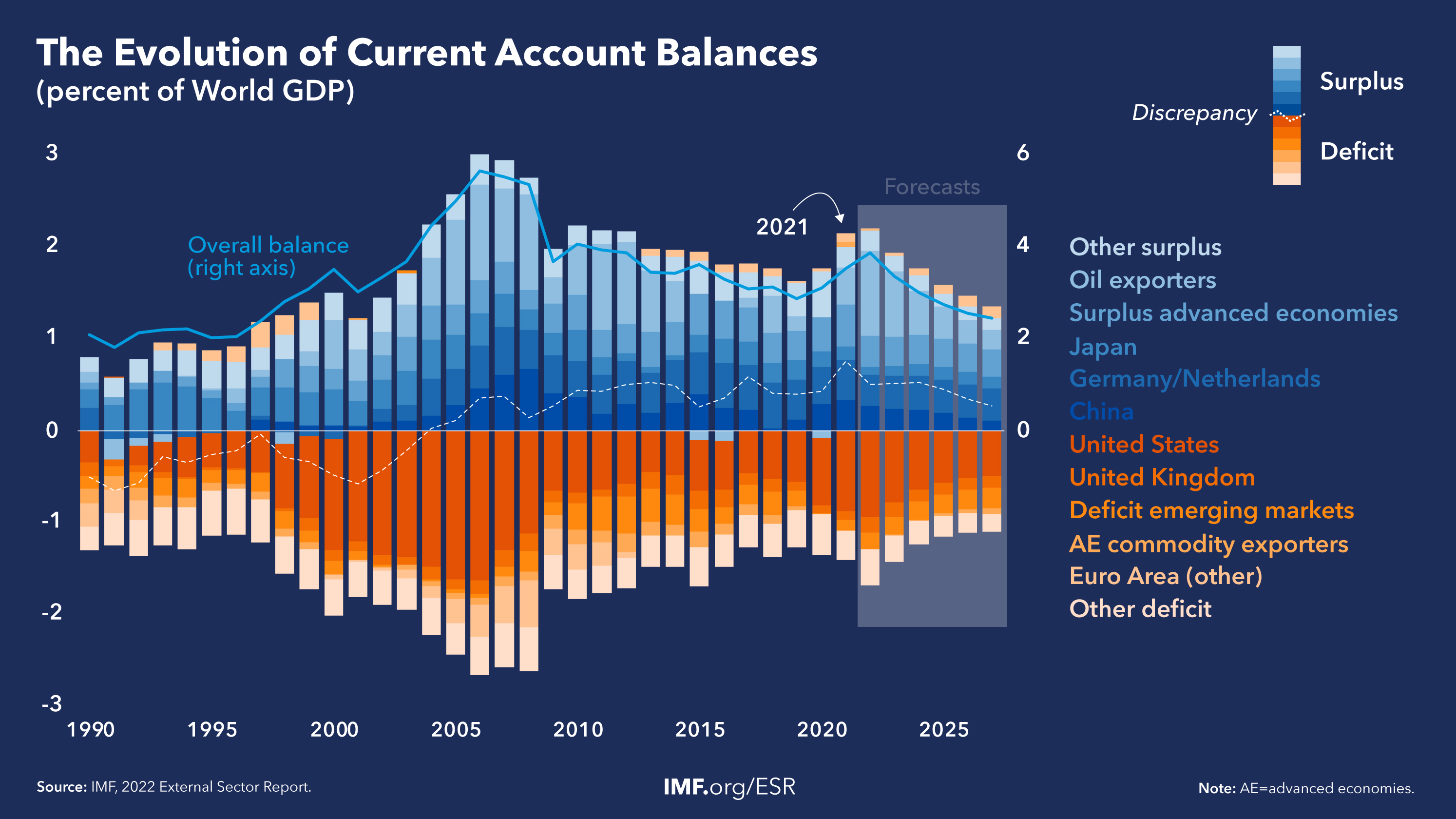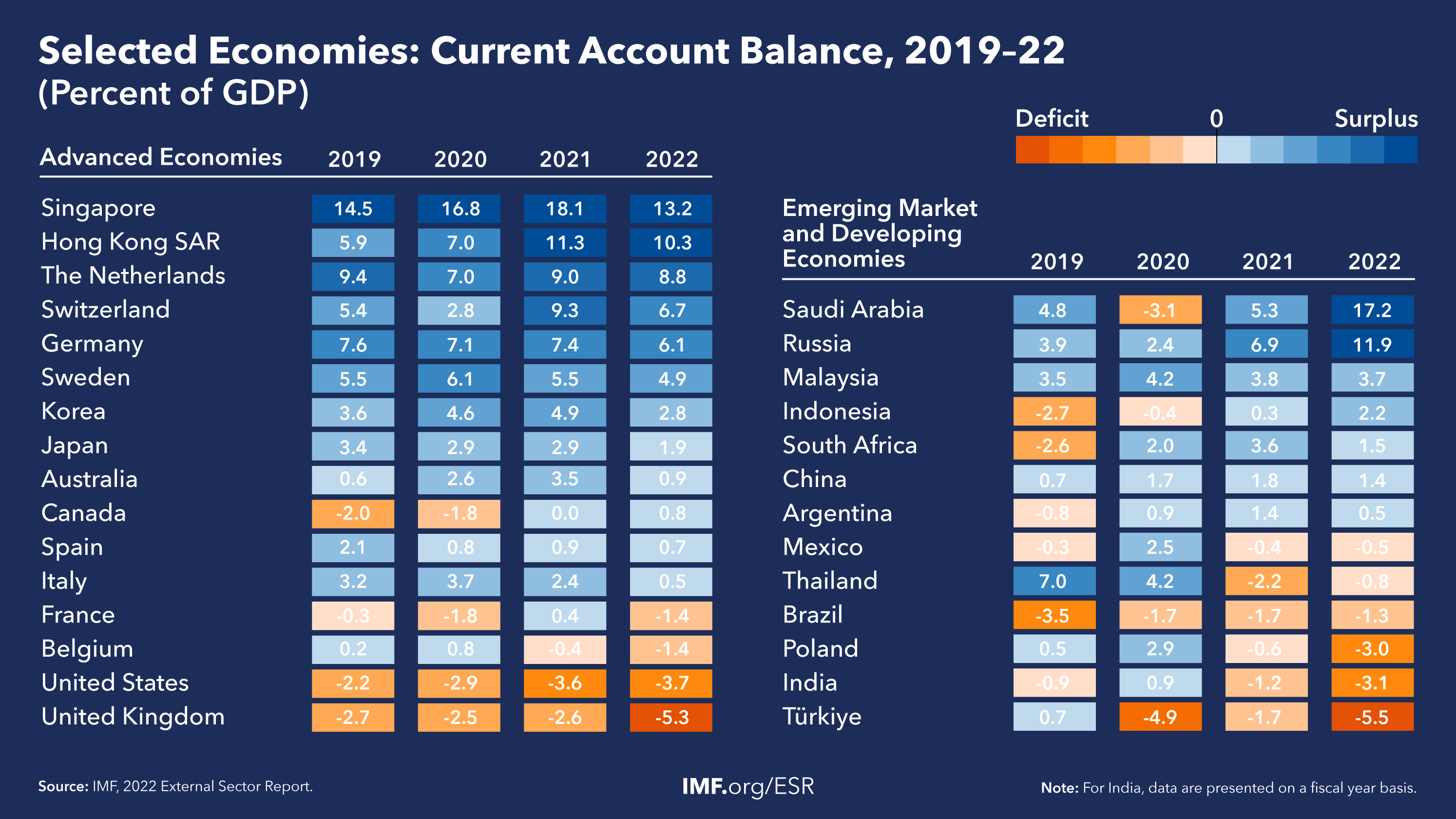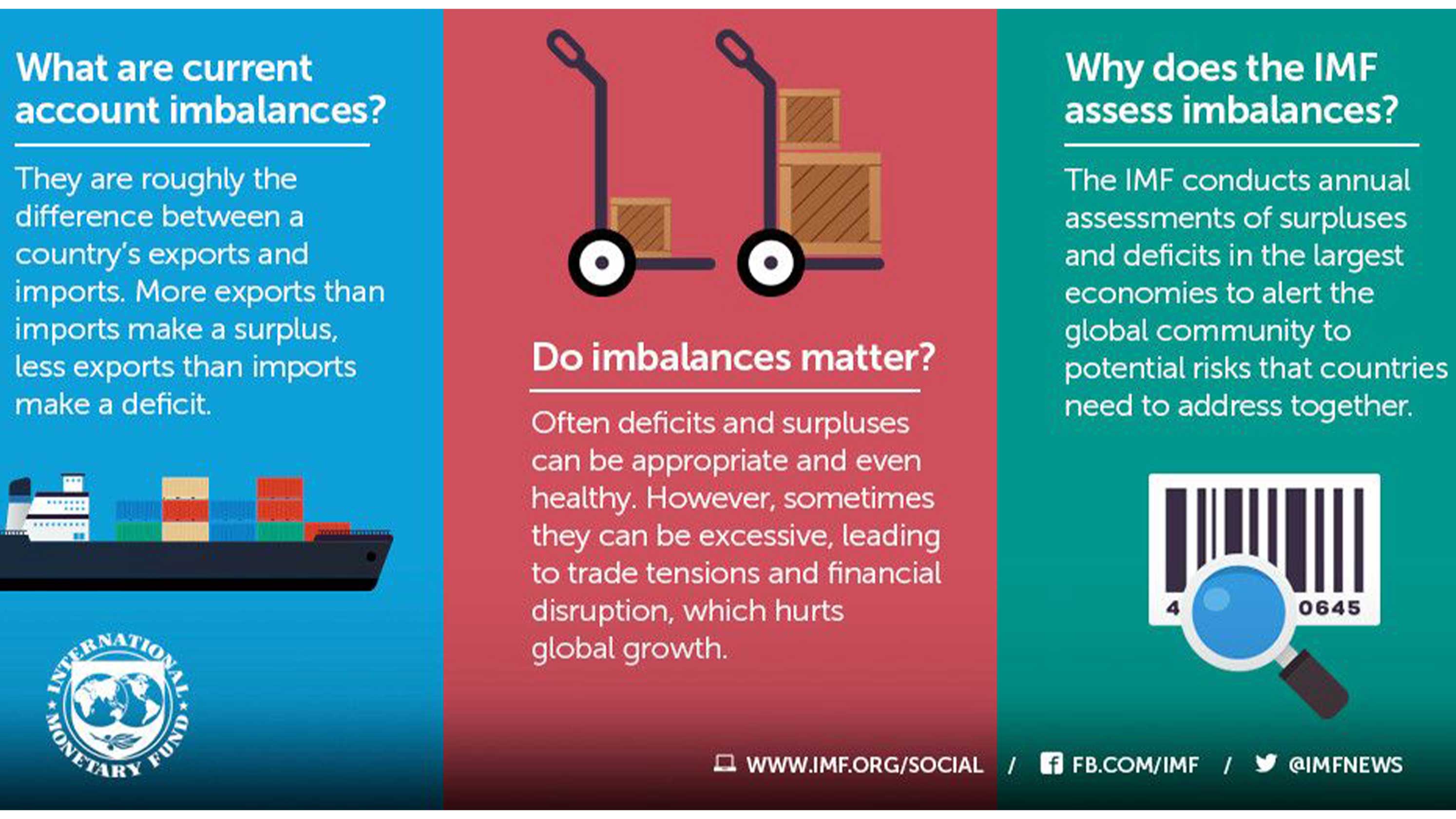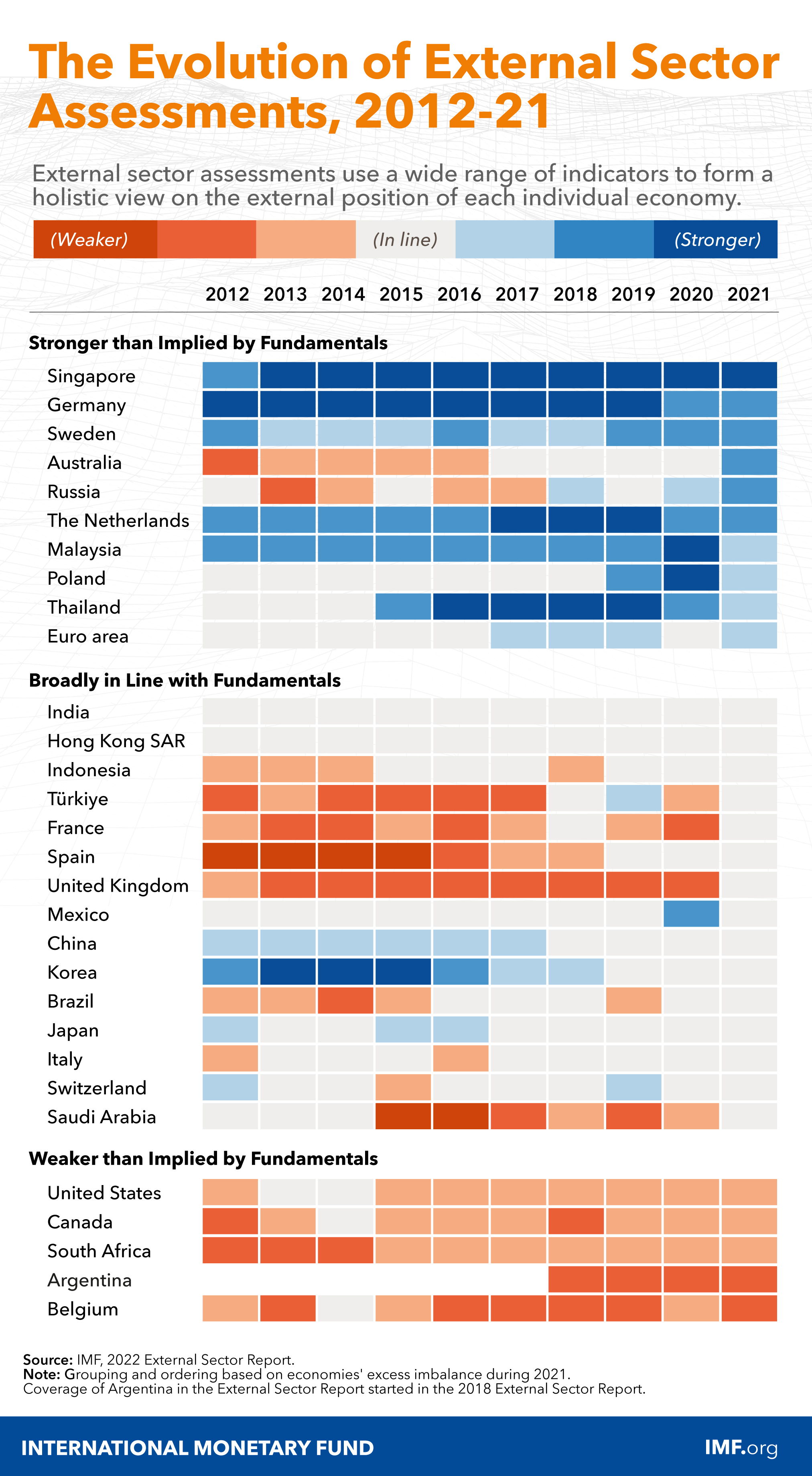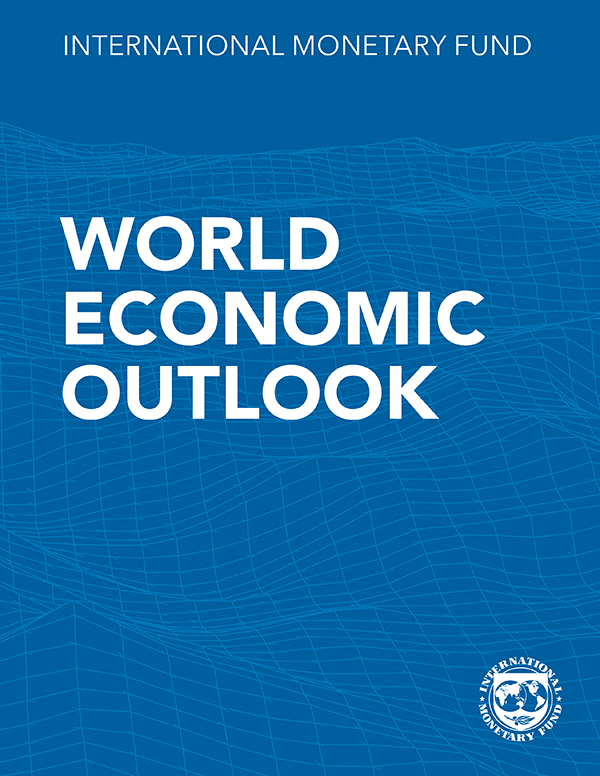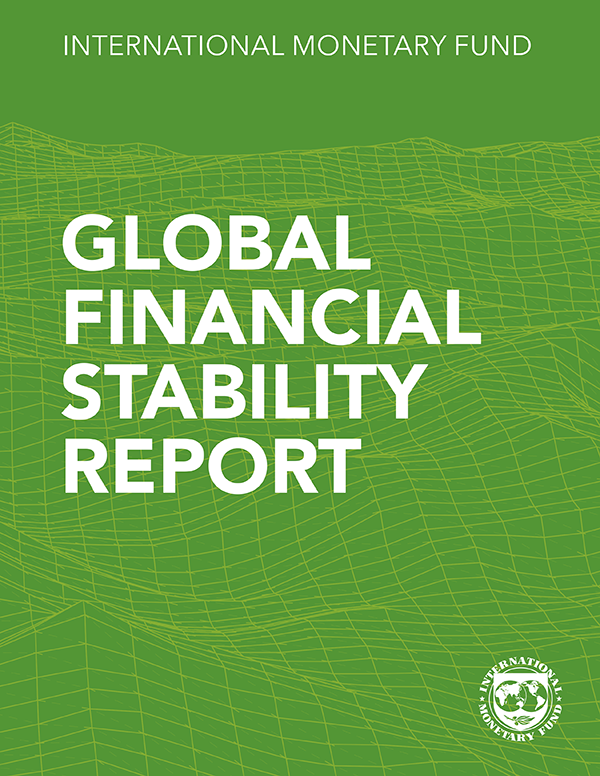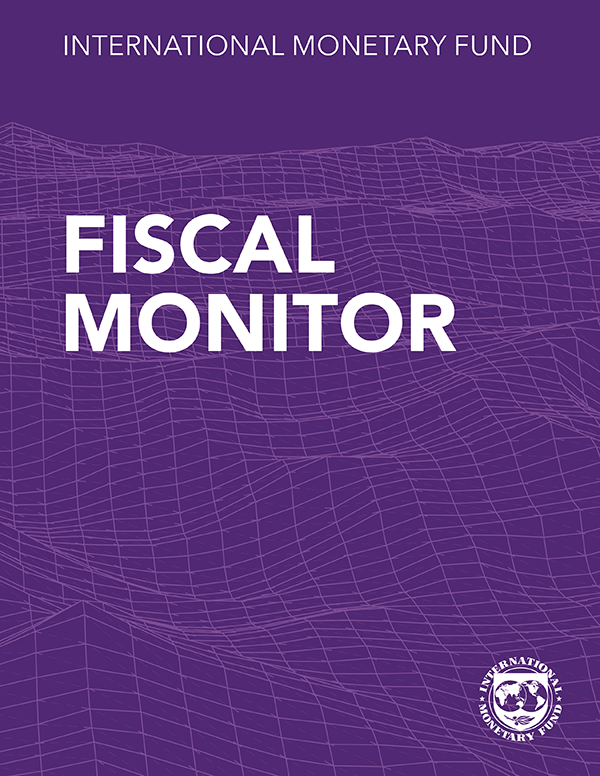Pandemic, War, and Global Imbalances

Key Highlights
Global current account balances—the overall size of current account deficits and surpluses—continued to widen in 2021 to 3.5 percent of world GDP, and are expected to widen again this year. The IMF’s multilateral approach suggests that global excess balances narrowed to 0.9 percent of world GDP in 2021 compared with 1.2 percent of world GDP in 2020.
The pandemic has continued to affect economies’ current account balances unevenly through the travel and transportation sectors as well as a shift from services to goods consumption. Commodity prices recovered from the COVID-19 shock and started rising in 2021 with opposite effects on the external position of exporters and importers, a trend that the war in Ukraine is exacerbating in 2022.
The medium-term outlook for global current account balances is a gradual narrowing as the impact of the pandemic fades away, commodity prices normalize, and fiscal consolidation in current account deficit economies progresses. However, this outlook is highly uncertain and subject to several risks. Policies to promote external rebalancing differ with positions and needs of individual economies.

External Positions and Policies
This overview chapter presents the evolution and outlook for and risks stemming from global external positions. It summarizes the 2021 external assessments for a globally representative set of economies, which are also detailed in Chapter 3, “2021 Individual Economy Assessments.”

Climate Policies and External Adjustment
Drawing on model-based analysis of a “net-zero emissions by 2050” scenario, this chapter analyzes how climate change mitigation policies—carbon tax, green subsidy, and infrastructure investment—could impact external balances over the next decade, examining the role of policy coordination, burden sharing, and countries’ structural characteristics.

2021 Individual Economy Assessments
The individual economy assessments use a wide range of methods to form an integrated and multilaterally consistent view of economies’ external sector positions.
Publications

-
September 2024
Finance & Development
- PRODUCTIVITY

-
September 2024
Annual Report
- Resilience in the Face of Change
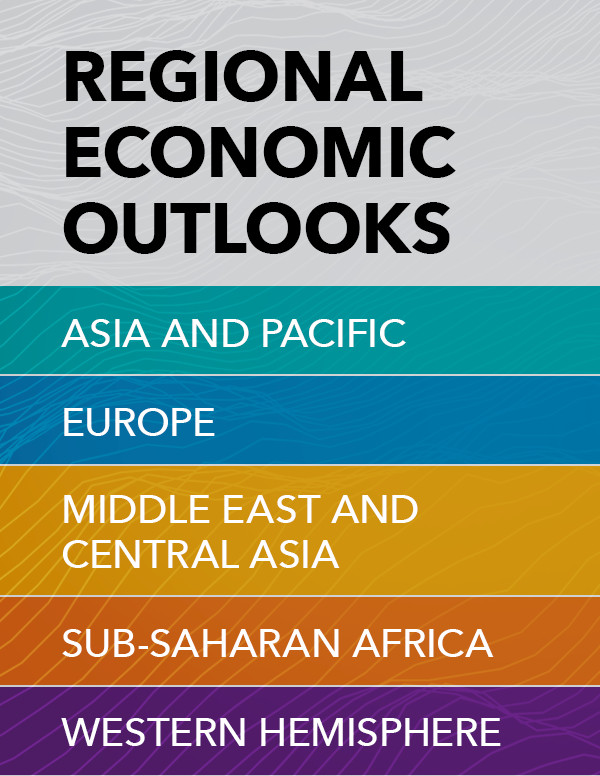
-
Regional Economic Outlooks
- Latest Issues






